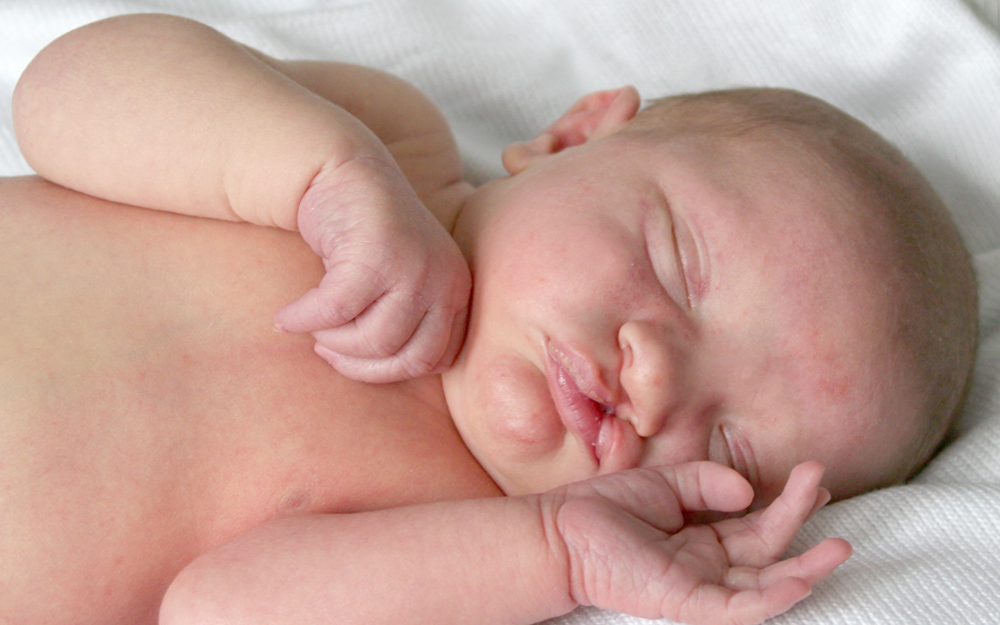Cedars-Sinai Blog
Cleft Lip and Cleft Palate: FAQ
Mar 10, 2023 Cedars-Sinai Staff

Cleft lip and cleft palate are among the most common birth defects in the U.S., affecting about one in every 700 babies. But with advances in surgical repair techniques, supportive therapies and dental and orthodontic care, most children born with cleft lip and/or cleft palate lead long, healthy lives.
"There’s no reason that any of these craniofacial differences need to be debilitating or derailing," says Dr. Victor Chien, a pediatric plastic surgeon at Cedars-Sinai Guerin Children’s. "Our goal as physicians in this space is to create a plan that helps alleviate parents’ fears and uncertainties—and provide the family with some degree of normalcy."
Victor Chien, MD
"There’s no reason that any of these craniofacial differences need to be debilitating or derailing. Our goal as physicians in this space is to create a plan that helps alleviate parents’ fears and uncertainties—and provide the family with some degree of normalcy."
To clear up confusion surrounding these conditions, check out these frequently asked questions.
What are cleft lip and cleft palate?
During the early days of a baby’s development inside the womb, there’s a split, or cleft, between the right and left sides of the lip and the roof of the mouth (called the palate). But somewhere between the sixth and 11th week of pregnancy, the two sides fuse together to form the lips and mouth.
A cleft lip happens if the tissue that makes up the lips doesn’t completely merge before birth. The resulting gap can be a small slit or a large opening that extends into the nose. It can appear on one or both sides of the lip, or in the center.
A cleft palate happens if the sides of the roof of the mouth don’t completely join together before birth. Some cases of cleft palate affect both the front and back of the palate, while others only affect part of the palate.
Children may be born with only a cleft lip, or only a cleft palate, but some babies have both a cleft lip and a cleft palate. According to the Centers for Disease Control and Prevention (CDC) estimates:
- About 1 in every 1,600 babies is born with cleft lip and cleft palate.
- About 1 in every 2,800 babies is born with cleft lip without cleft palate.
- About 1 in every 1,700 babies is born with cleft palate.
What causes cleft lip and cleft palate?
Scientists aren’t entirely clear what causes cleft lip and cleft palate. Both genetics and environmental insults appear to play key roles.
According to the CDC, the following factors may increase the risk of having a baby with a cleft lip and cleft palate:
- Smoking during pregnancy
- A diabetes diagnosis before pregnancy
- Nutrient deficiencies, such as insufficient folic acid, during pregnancy
- Using anti-seizure medications, Accutane (for acne) or methotrexate (for cancer, arthritis and psoriasis) during the first trimester
How are cleft lip and cleft palate diagnosed?
With today’s advanced ultrasound technology, doctors are usually able to diagnose cleft lip before birth. Cleft lip may be discovered as early as 12 weeks into the pregnancy, though it’s typically caught between 18 and 22 weeks.
"Unfortunately, cleft palate can be more difficult to see on a prenatal ultrasound," Dr. Chien says. "In that case, we can diagnose cleft palate with a physical exam of the mouth, nose and palate after birth."
What types of problems are associated with cleft lip and cleft palate?
Unfortunately, both cleft lip and cleft palate present problems that extend beyond physical differences. A few of the most common problems:
- Feeding: Kids with cleft lip and cleft palate may have trouble forming a seal around the nipple of a bottle or breast, which can make feedings more complicated.
- Speech: Children with a cleft palate may have difficulty forming words, which can make their voices sound nasally and their speech hard to understand.
- Ear infections and hearing loss: When there’s an opening in the roof of the mouth, fluid can pass more easily through the nose and throat and build up behind the eardrum. Many kids with cleft palate have tubes surgically placed in the ears to assist with fluid drainage and reduce the risk of ear infections.
- Dental issues: Children who have cleft lip and cleft palate may be more vulnerable to missing, malformed and displaced teeth as they grow older.
- Self-esteem: It’s common for children with clefts to be embarrassed or self-conscious about their appearance, which can lead to psychological problems and social issues.
What types of treatments are available for cleft lip and cleft palate?
Treatments for cleft lip and cleft palate depend on the severity of the cleft and whether the child has other health conditions. Because both cleft lip and cleft palate can cause a range of medical problems, treatment typically begins during infancy and often extends through the child’s teen years.
"An initial cleft lip repair can happen as early as 3 months of age, and in some cases earlier. A cleft palate repair happens later, between 6 and 18 months, with surgeries timed around speech development—ideally before language acquisition so kids don’t have to relearn how to speak," Dr. Chien says.
Most children with cleft lip and cleft palate require multiple procedures during their developmental years, but every child’s experience is unique. Some will need additional surgeries during their school-age years to improve speech. Others will undergo surgeries to address cosmetic concerns.
"That’s why it’s important for these kids to have a multidisciplinary team of experts that follows them throughout their development," Dr. Chien says.
With a dedicated healthcare team, including ear, nose and throat specialists, plastic surgeons, oral surgeons, speech pathologists, audiologists, orthodontists, psychologists and social workers, children with cleft lip and/or cleft palate are well positioned to grow and thrive.
"Our role is to shepherd patients and families through the difficult parts of cleft lip and cleft palate so they can be freed up to live their lives," Dr. Chien says.



